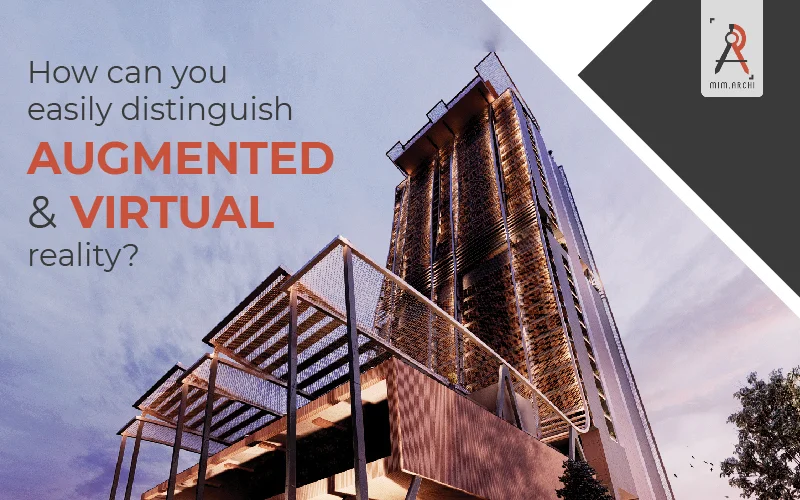
As of now, the potential of VR (virtual reality) and AR (augmented reality) in gaming, marketing, real estate, eCommerce, and education is enormous. Both technologies provide enhanced, 3-D visuals that combine virtual and real-world into a seamless experience. The two are often confused, but there are some significant differences between them.
Let’s begin by understanding their differences and the potential for the future growth of different industries by knowing them.
Augmented reality (AR) technology converts the physical world into a colorful, visual experience by displaying virtual images and characters via the smartphone’s camera. In other words, augmented reality is the integration of real-life experiences.
Smartphone users have easy access to augmented reality, making it a more effective tool than virtual reality for marketing and gaming.
The concept of virtual reality takes all these components to another level by delivering an entirely simulated global environment from a computer. Using computer equipment, sensors, headsets, and gloves, immersive simulators can simulate nearly any visual or place imaginable.
Virtual reality revolves around simulating vision. VR headset screens need to be put in front of a user’s eyes. As a result, removing all interaction with real life.
To display appropriate content to the user, augmented reality integrates computer vision, mapping, and depth tracking. Cameras can use this feature to collect, store, and transmit data to display appropriate digital content depending on where an occupant is in the room.
An augmented reality system adds contextually relevant digital content to a user’s physical environment in real-time. AR is accessible via smartphones and special devices.
VR is primarily concerned with simulating vision. Where you wear a VR headset in order to experience virtual reality. Consequently, it eliminates your interaction with the real world.
Users should adjust their eyes according to their individual eye movement and their positioning. Using an HDMI cable, the visuals you see on the screen will be rendered on any PC or mobile phone connected to the cable.
Users use goggles, speakers, and sometimes handheld wearables to simulate a real-world experience. Immersive VR experiences can also be created through visual, auditory, and haptic stimulation.
Note: Explore the applications of virtual reality in real estate industry.
• Augmented reality augments real life by adding digital elements.
• In AR, users are always aware that they are present in real-time.
• Users are partly immersed in the action through this technology.
• Broadband bandwidth of at least 100 Mbps is required for AR
• There is no need for an AR headset.
• Users still interact with real objects while interacting with virtual ones that are closer to them using augmented reality.
• Both the real and virtual worlds can benefit from it.
• In a VR environment, you are immersed in a virtual world.
• Virtual reality puts the control of visual perception into the hands of the user.
• A minimum connection speed of 50 Mbps is required for VR.
• Virtual reality headsets are needed.
• VR isolates the user from reality and offers an immersive experience of an entirely fictional world.
• For gaming, it enhances fictional reality.
Mixed Reality combines the physical and digital worlds, enabling natural and intuitive interactions among humans, computers, and the environment. As a result of improvements in computer vision, graphical processing, display technologies, input systems, and cloud computing, this new reality has emerged.
A step beyond augmented and virtual reality, MR augments the perception of information perceived by the user. Users can interact with the virtual and physical worlds in MR, as they interact with each other. As developer Intel describes it on its website, MR allows users to have one foot (or hand) in the physical world, while the other is in an imagined environment. AR enhances perceptions of reality while MR blurs the line between what is real and what is not.
Note: Mimar uses augmented and virtual reality to help conceptualize buildings before construction begins.
360 Virtual tours and virtual staging are becoming more popular in real estate as augmented reality and virtual reality technologies gain interest.
Virtual reality allows potential buyers or renters to tour a property virtually, sparing them both travel time and expenses. VR staging is also possible using VR technology. The use of virtual reality lets real estate agents display fully furnished spaces to prospective buyers, even if the spaces are empty in reality.
Augmented reality adds digital elements to an existing device, like an iPad or smartphone. Technology such as augmented reality (AR) can help prospective buyers experience a space even before the building is complete.
The virtual tours of properties can help real estate companies market them quickly and without expending a lot of resources. Besides marketing the finished project before it is completed, virtual reality can also be used to showcase uncompleted works. It allows agents to show a property’s interior and exterior even before it’s finished. However, users can also view a virtual tour from the comfort of their homes.
Learn how AR, VR are revolutionizing the real estate market.